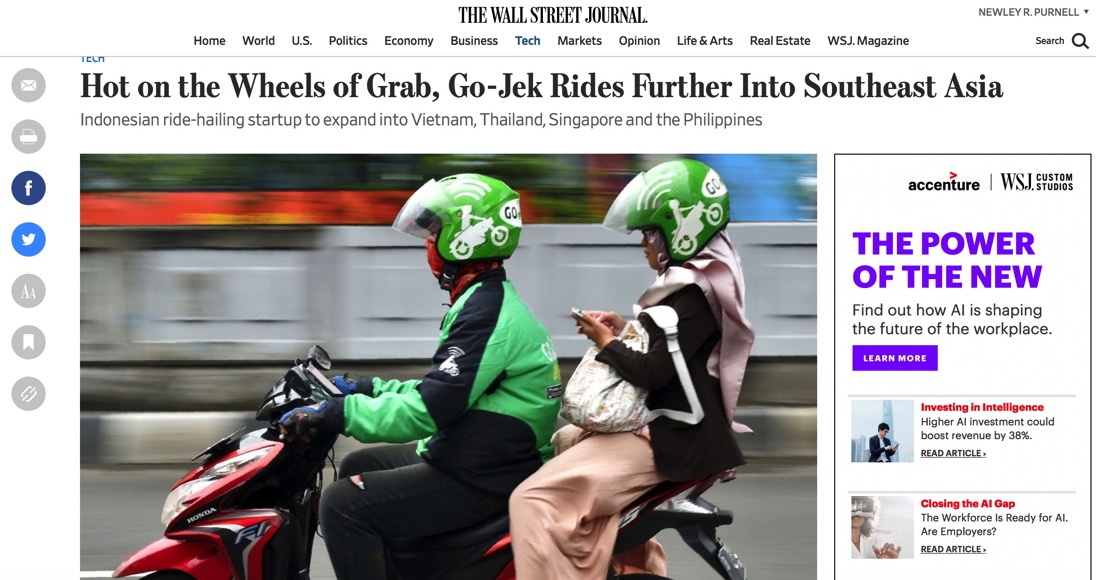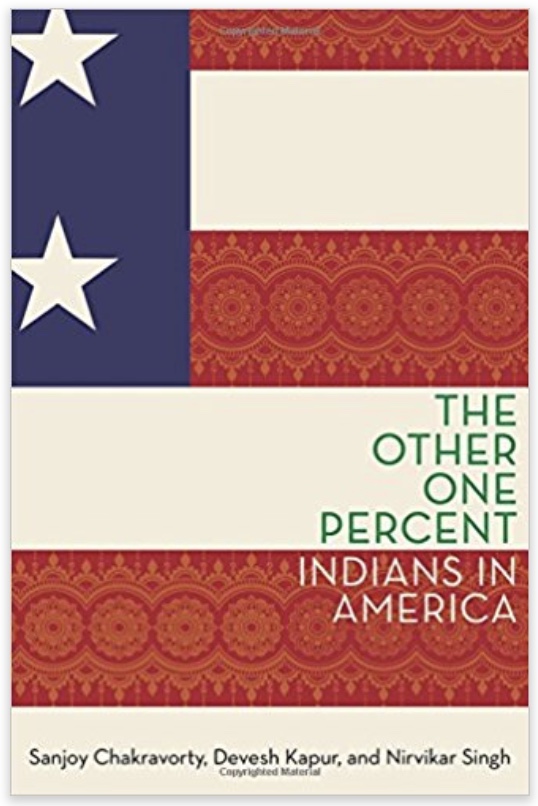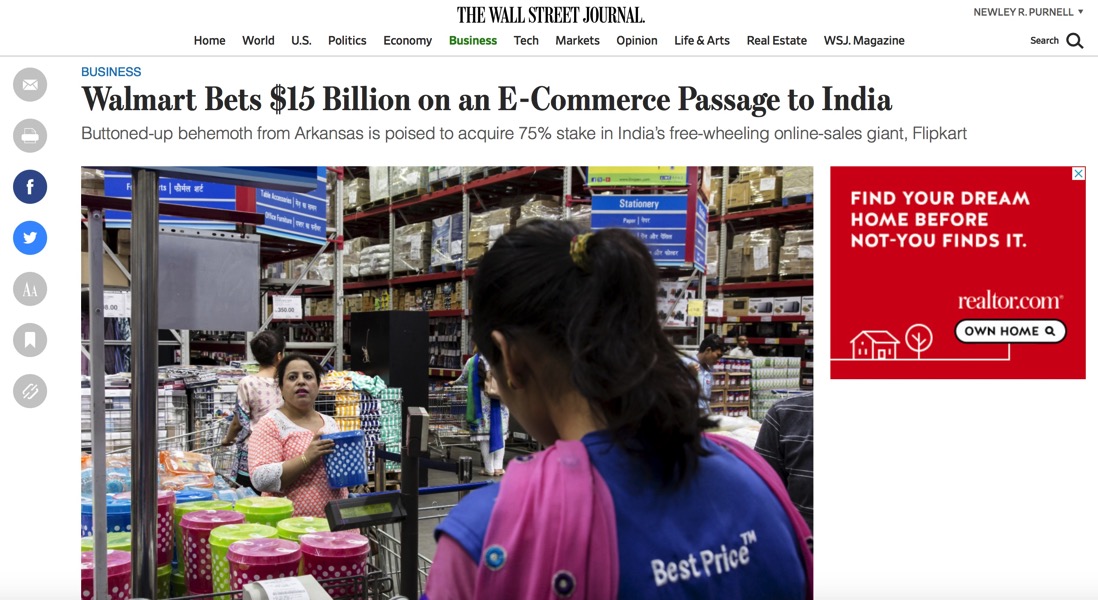
Edition 132 of my email newsletter went out on Sunday.
If you’d like NN delivered to your inbox, simply enter your email address here. It’s free, it’s fun, it’s brief, and few people unsubscribe.
Hi, friends. Welcome to the latest edition of Newley’s Notes.
🔥 So. It’s hot here in Delhi.
Like, really hot.
Today the high was over 100 Fahrenheit (39 Celsius), and it could get up to 109 later in the week. Crazy!
Unlike tropical Bangkok and Singapore, where we lived earlier, it’s not humid here in the Indian capital. But man is it starting to feel oven-like. The monsoon rains should start in July, bringing perhaps some relief.
Anyway, on to this week’s NN:
Here are ten items worth your time this week:
🛒 1) Just out, a new story with my colleagues Sarah Nassauer and Luciana Magalhães: Walmart Looks to Scale Back in U.K. and Brazil, With an Eye on India [Wall Street Journal] — It begins:
The world’s biggest retailer has concluded it can’t take on the whole world by itself.
Walmart Inc. is in discussions to give up control over hundreds of stores in the U.K. and Brazil, two big markets where it has struggled for years, according to people familiar with the talks. At the same time, it is preparing to pour billions of dollars into an Indian e-commerce startup to crack a promising market that has long eluded the U.S. giant.
Yes, we could be seeing Amazon vs. Walmart – here in India.
🐷 2) Amazing headline of the week: Researchers are keeping pig brains alive outside the body [MIT Technology Review] — Contains the memorable quote, “I think a lot of people are going to start going to slaughterhouses to get heads and figure it out.”
📷 3) I’m Sorry To Report Instagram Is Bad Now [Buzzfeed] — The photo sharing platform’s Stories feature — which allows people to post ephemeral images on the fly — may mean they’re sharing less to the more carefully curated main feed, Katie Notopoulos writes. (I’m neither here nor there on this feature, but my feeling is that we’re about a year away from a more serious Instagram backlash; I think newsfeed-based social media platforms are on the way out.)
🛴 4) Adults Are Terrorizing San Francisco On Tiny Electric Scooters [WSJ] — My colleague Eliot Brown reports in a memorable A-hed that:
Last month, a trio of well-funded startups began flooding the city with hundreds of electric for-rent scooters that can travel up to 15 miles an hour—starting at just $1 a ride. Riders pick them up and leave them most anywhere.
The whimsical transit option has turned sidewalks into breeding grounds of conflict, pitting pedestrians against fans of cheap car-free transportation. In compact San Francisco, where a freewheeling culture often collides with anti-tech sentiment, scooters are joining an array of unconventional transportation from self-driving cars to electric unicycles.
Bonus link, from Curbed: Everything you need to know about the great electric-scooter takeover of San Francisco.
⚙ 5) RIP AirPort Base Stations [iMore] — AirPort Express, Extreme, and Time Capsule are being discontinued, Rene Ritchie writes. It’s unclear why Apple no longer wants to make routers; perhaps sales were never that significant to begin with.
😑 6) Shot:Researchers Hacked Amazon’s Alexa to Spy On Users, Again [ThreatPost] — As I wrote on Twitter, “I’ve said it once and I’ll say it again. If you’re concerned about privacy, you’re nuts to have a connected device in your home.”
🤖 7) Chaser: Amazon Has a Top-Secret Plan to Build Home Robots [Bloomberg] — “Prototypes of the robots have advanced cameras and computer vision software and can navigate through homes like a self-driving car,” Mark Gurman and Brad Stone report.
⚽ 8) The Admirable Legacy of Arsène Wenger [New Yorker] — Hua Hsu provides a balanced summation of what Wenger leaves behind, now that he’s announced he’s leaving. “Wenger’s teams have always seemed cultured and sophisticated, hard-wired to entertain and delight,” Hsu writes.
🗞️ 9) A farewell to free journalism [Washington Post] — The excellent Megan McArdle, riffing on the news that Bloomberg might be the latest news organization to erect a paywall, says the days of the free-news-in-exchange-for-viewing-ads business model may well be numbered. Increasingly, if you want quality journalism, you’re just going to have to pay for it.
🤣 10) One heartwarming thing: A 9-Year-Old Girl Enters The New Yorker Cartoon Caption Contest [YouTube] — This is adorable.
If you like this newsletter, please forward it to a friend. If you received this from a pal, you can sign up here.
👊 Fist bump from New Delhi,
Newley











